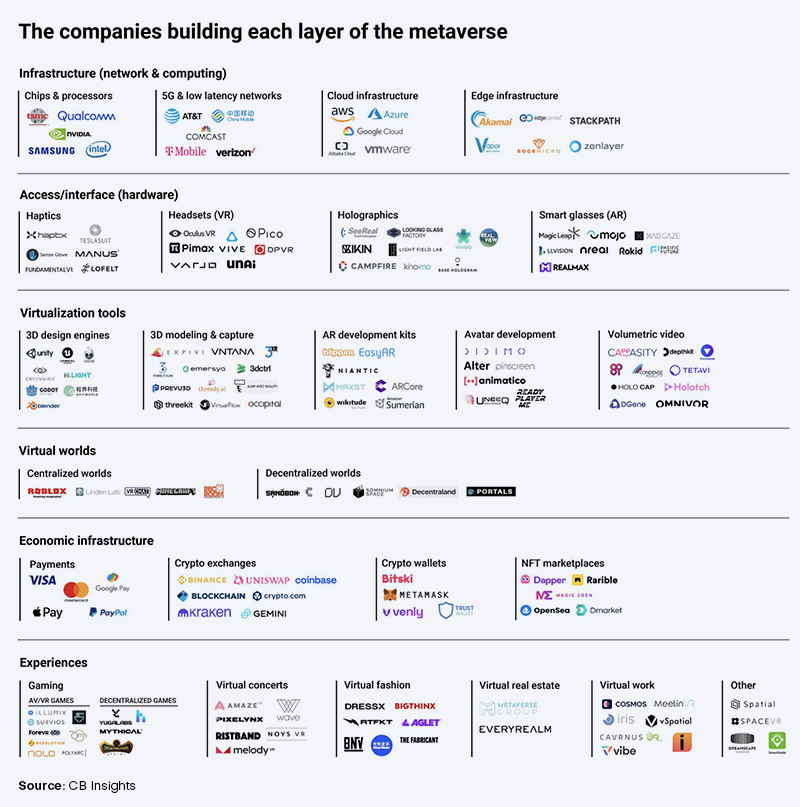Do you remember when, back in March, Amazon released a skill-building online role-playing metaverse game to help people grasp cloud computing in a fun way?
The metaverse game, called AWS Cloud Quest: Cloud Practitioner, lets players create their own avatars and use them to explore a virtual city, address cloud computing-related issues, and more technical aspects of the subject. Amazon said that the purpose of Cloud Quest was to assist cloud enthusiasts in explaining “essential AWS services and categories” such as computing, storage, database, and security services, as well as to direct the development of fundamental cloud solutions.
That said, the relationship between the cloud and the metaverse is not limited to leveraging the metaverse to understand cloud computing. There’s more to it. Companies are still confused about the metaverse’s effects on cloud computing. But in this article, we will explain how metaverse and cloud co-exist. What is metaverse, its deep-rooted connection with cloud computing, and more? Read on.
What is metaverse?
The easiest way to define the metaverse is as a collaborative “imaginary place” enabled by technical breakthroughs like 3D virtual worlds, AR/VR, AI, and more. According to experts, it will serve as the operating system for the near future, a hub for employment, social interaction, recreation, shopping, and education.

In the industrialized world, most occupations are in the service and knowledge sectors, and many of us now conduct most of our daily lives online. And we’ve learned that many things can be done remotely as remote work has become more popular as a result of Covid. The platform metaverse will soon let this remote work culture have a more social and human component.
By utilizing the cloud, virtual reality, AI, and blockchain to build virtual worlds, the metaverse aspires to achieve this.
The Upcoming Co-dependency of Metaverse & Cloud
We discussed how the metaverse concept is still in its infancy and is rather unclear. Even if the metaverse’s fundamental idea isn’t clear, we may nevertheless draw conclusions about how its entrance might affect human interactions.
Before the term “metaverse” rose to fame, there was discussion about cloud computing, its adaptable on-demand services, and its simple deployment procedure. Cloud is probably the most trending technology from the past few years, and the pandemic has just stimulated its growth exponentially.
So how does the metaverse have a contribution to make? Cloud could basically retain its usefulness while being given an additional degree of intricacy by the metaverse construction. Both can coexist in the future and most likely will.

Cbinsights claims that the metaverse is a subject that is always changing and growing, and they have developed the framework above to assist users in navigating it. The chart above shows a list of the major companies attempting to bring metaverse to life and how they might integrate the concept into their many technology levels.
To fully capitalize on this wave and boost performance, one must comprehend how the metaverse works and the advantages of combining it with cloud computing. Cloud computing and the metaverse are intertwined now and in the future. The metaverse will compel businesses from all sectors to switch to cloud infrastructures in order to host their virtual worlds. Numerous organizations will move workloads, making room for new technologies to help them model their virtual environments.
Building a metaverse is almost unachievable without highly accessible and expandable structures and hosting spaces. More levels of intricacy will be added as the metaverse develops. You’ll need a strong foundation to support the weighty replica world and give consumers a flawless interface without any operational issues or other backend constraints.
Additionally, this tendency will hasten the growth of the cloud workforce as a result of the increased need for cloud administrators, security specialists, developers, data analysts, etc.
It is, therefore, more accurate to predict that the metaverse and cloud computing will cohabit. The metaverse would lead to more clouds, even if nothing else. The top ways are explained below:
Top Ways How Metaverse Will Communicate With Cloud
Handling 3D environments
Hosting virtual 3D worlds would be difficult and need enormous storage and processing power. Making space for cloud services will be more than necessary for businesses who wish to develop their own metaverse platforms. Scaling while spending valuable money on hardware is virtually difficult, making cloud service providers stronger than ever.
Hybrid cloud demand
Making sure that people can utilize the metaverse without being hindered by bandwidth restrictions or Internet connectivity issues may prove to be a significant hurdle as it grows. The metaverse floating in a pool of ambiguity increases the possibility of outages since they may be extremely disruptive.
Another issue of concern is the security of private data in the metaverse. Even though it is unknown how regulators would define or interpret personal information in this environment, there are plenty of reasons to expect that it will need to be safeguarded in the same way as personal information in a traditional cloud setup.
The aforementioned requirements—better performance while retaining data security—will logically boost the market for the cloud, especially the hybrid, as a method of serving the metaverse.
The emergence of new cloud providers
It’s very conceivable that brand-new cloud providers with an emphasis on hosting the metaverse will emerge. Why and how? This is because most current public cloud service providers do not support tools like GPUs, which are fundamentally required to enable the metaverse. Some VMs with GPU support are nevertheless only created by a small number of cloud powerhouses like AWS. Smaller cloud service providers, therefore, have a lot of room to choke the market and get an early mover advantage.
Conclusion
Despite widespread skepticism, major giants like Meta, Apple, Microsoft, and others are focusing on the metaverse and investing significantly in this cutting-edge technology. Meta adds cloud technology’s solid architecture and all-encompassing capabilities to its present local infrastructure. It will also use more cloud-based computing, storage, database, and security services. We can see another major trend combining metaverse and cloud – Metaverse-as-a-Service, wherein public cloud providers will look into hosting metaverse and allowing customers to install custom settings.

